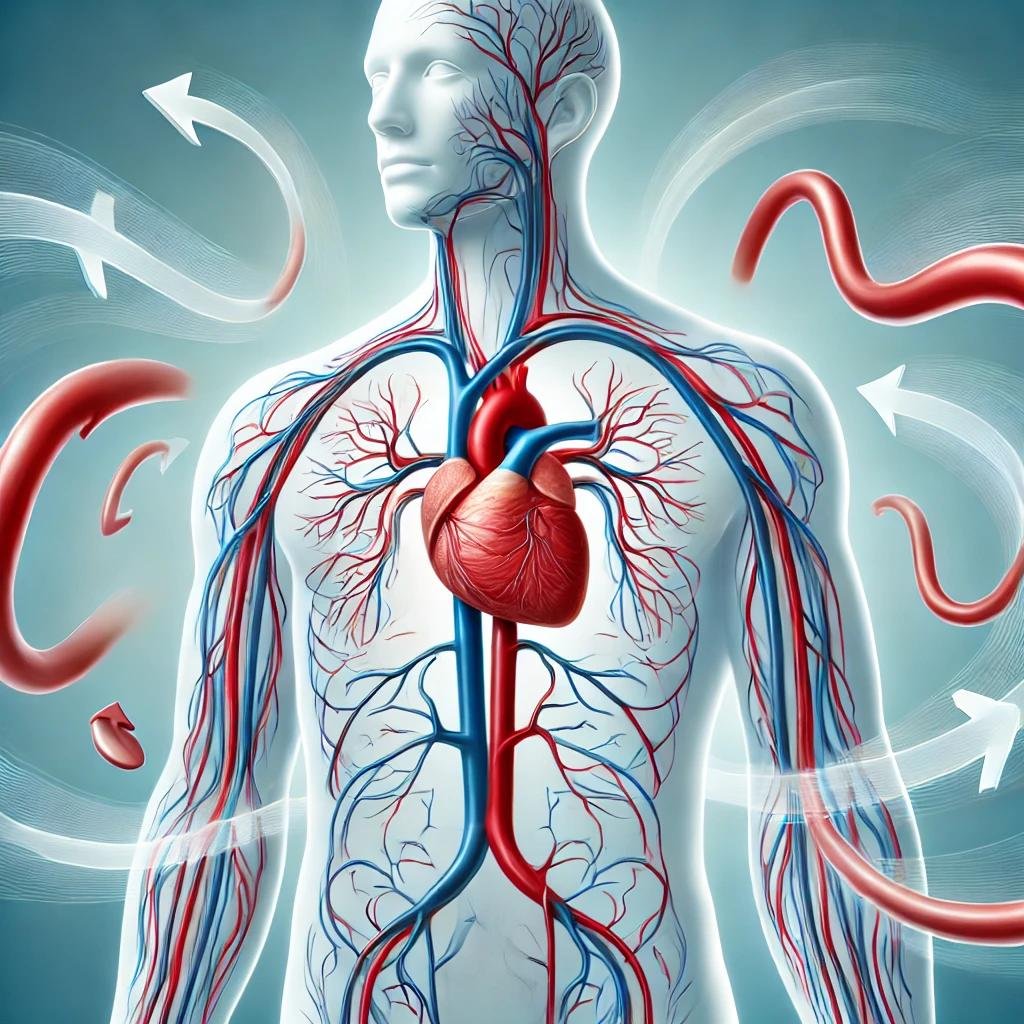When most people think about recovery, they imagine lounging on the couch, taking a day off, or catching up on a TV series. While these may sound restful, they don’t always provide the type of recovery your body—and mind—truly need. Recovery isn’t just about stopping movement or being still. It’s about creating the optimal conditions for repair, adaptation, and future performance.
Recovery isn’t passive. It’s strategic.
Rest vs. Recovery: Going Deeper
Let’s first clear up a common confusion: rest is not the same as recovery.
Rest refers to periods of reduced activity, allowing the body (and ideally, the mind) to downshift. Sleep, meditation, mindful breathing—all excellent examples—intentionally lower sympathetic nervous system activity and promote restoration.
However, rest is not simply the absence of movement. For instance, sitting on the couch binge-watching TV may seem restful—you’re not physically active—but it can keep your brain overstimulated. Engaging with screens, loud media, or social scrolling can actually spike cortisol levels, increase mental fatigue, and interfere with deeper recovery processes like quality sleep and nervous system balance.
Recovery, on the other hand, is a broader, more active process. It includes rest but also integrates deliberate strategies—movement, nutrition, hydration, breathwork, and sleep hygiene—all aimed at restoring homeostasis and enhancing your ability to perform at a higher level next time you train.
Key takeaway:
Stillness ≠ Recovery.
True rest = Downregulating both the body and the mind.
Recovery = Comprehensive preparation for adaptation.
Why Recovery Matters: The Adaptation Equation
The fundamental goal of any training plan is adaptation—getting stronger, faster, or more skilled over time. That only happens if you allow for full recovery between stressors.
Here’s the cycle:
Training (Stress): You challenge your system.
Fatigue: Temporary breakdown and depletion.
Recovery: Active repair and rebalancing.
Adaptation: You bounce back stronger and more resilient.
The better you recover, the more frequently and intensely you can train without breaking down. It’s not about avoiding effort—it’s about maximizing your gains from that effort.
The Core Pillars of Recovery (And How They Truly Work)
1. Sleep: Your Recovery Superpower
Sleep is the most potent form of rest and recovery. It’s during deep sleep that the body undergoes tissue repair, hormonal regulation, and neurological reset. Growth hormone spikes, muscle protein synthesis occurs, and the brain consolidates motor learning.
Compare that to late-night screen time. Passive activities like scrolling your phone or binge-watching might seem relaxing, but they can leave your brain over-engaged, making it harder to settle into restorative sleep.
Recovery action steps:
Prioritize 7–9 hours of uninterrupted sleep nightly.
Limit screen exposure 1–2 hours before bed.
Opt for pre-sleep rituals like reading, light stretching, or breathing exercises instead of overstimulating media.
2. Mindful Rest: Meditation & Parasympathetic Activation
Mindfulness practices like meditation, breathwork, or quiet reflection allow for deep mental rest. Unlike passive screen time, these practices actively downregulate the nervous system, shifting you from the “fight or flight” sympathetic state to the parasympathetic “rest and digest” mode.
What’s key here: you’re intentionally engaging in practices that quiet both body and mind.
Recovery action steps:
Incorporate 5–10 minutes of diaphragmatic breathing or meditation daily.
Use guided relaxation techniques to calm mental chatter.
Avoid defaulting to overstimulating "veg-out" activities when you’re fatigued—choose something that actually soothes the system.
3. Movement-Based Recovery: Light, Intentional, and Capacity-Building
Active recovery—like walking, stretching, light cycling, or easy swimming—plays a crucial role in enhancing circulation, joint mobility, and nutrient delivery without adding undue stress to the system. It’s not about pushing limits; it’s about gently encouraging the body to stay mobile and engaged.
But there’s more: regular, lower-intensity, longer-duration movement improves aerobic capacity—which in turn enhances your body’s ability to recover. A well-developed aerobic system increases your efficiency at delivering oxygen, clearing waste products, and managing fatigue. That means you bounce back faster between hard training sessions and sustain higher-quality performance over time.
Additionally, mindfulness matters. Moving with intention—being aware of your breath, posture, and how your body feels—amplifies the restorative effect. Mindlessly going through the motions doesn’t give you the same benefit as movement done consciously, connected to how your system is responding.
Recovery mindset: Use low-intensity movement not just to avoid stagnation, but to build long-term recovery capacity. Gentle doesn't mean pointless—light movement stimulates growth, clears fatigue, and creates a stronger foundation for future training.
4. Hemodynamics: Supporting Circulation and Systemic Balance
One of the most foundational, yet underappreciated, aspects of recovery is hemodynamics—the regulation of blood flow and circulation throughout the body. Efficient circulation is essential for delivering oxygen, nutrients, and hormones to tissues while clearing out metabolic waste products. Simply put, good hemodynamics make recovery processes smoother, faster, and more complete.
However, circulation isn’t solely about the heart working harder. It’s influenced by breathing patterns, posture, movement quality, and autonomic balance. Shallow breathing, poor posture, or chronic stress can limit blood flow, preventing key areas like the diaphragm, ribcage, and pelvis from moving efficiently. This creates bottlenecks that impair how well oxygen and nutrients reach fatigued tissues—and how effectively waste products are cleared.
In addition to movement and breathwork, passive recovery modalities can complement and enhance circulatory dynamics:
Intermittent compression devices (like Normatec boots) use pulsing pressure to promote venous return, reduce swelling, and enhance lymphatic flow.
Certain electrical stimulation modes (such as low-frequency, pulsed stimulation) can gently activate muscles to assist circulation without adding mechanical stress to joints or tissues.
While these tools are helpful, they work best when integrated into a broader recovery strategy that includes active approaches like diaphragmatic breathing, low-intensity movement, and autonomic downregulation.
Recovery action steps:
Use diaphragmatic breathing drills to improve venous return and regulate heart rate.
Address postural imbalances and ribcage/pelvic positioning to optimize blood flow pathways.
Incorporate low-intensity, rhythmic movement (walking, cycling, swimming) to assist circulation without fatigue.
Consider intermittent compression therapy or light electrical stimulation as adjunct tools to boost blood flow and lymphatic drainage, especially post-training or during periods of heavy load.
Pair all circulatory efforts with nervous system-calming techniques (breathwork, meditation) to keep the body primed for efficient recovery.
Recovery mindset: Recovery doesn’t stop at the muscle level—it starts internally. Supporting optimal circulation through both active and passive methods creates an environment where every system (cardiovascular, respiratory, neurological) works together to speed repair and sustain long-term performance.
5. Nutrition & Hydration: The Ongoing Process of Fueling Repair
Recovery isn’t just about what you eat after a workout—it’s shaped by your entire nutritional approach. There are no quick fixes or magic foods that instantly accelerate recovery. Instead, it’s the consistent process of providing your body with the right resources over time that makes the difference.
Quantity, quality, timing, and intention all matter:
Quantity: Are you eating enough to support your training load and recovery demands—but not so much that it hinders recovery? Chronically undereating leaves you under-fueled, slows tissue repair, and suppresses adaptation. On the other hand, overeating, especially without regard to nutrient quality, can create unnecessary digestive stress, inflammation, and sluggishness—all of which blunt recovery and performance. Finding the right balance means matching intake to your output while staying attentive to how your body feels and performs.
Quality: Nutrient-dense foods—rich in protein, healthy fats, complex carbohydrates, and micronutrients—provide the building blocks your body needs to rebuild.
Timing: Strategically fueling before and after training supports energy availability, muscle repair, and glycogen replenishment.
Intention: How you approach eating—both mentally and strategically—matters. Consuming food distractedly, stressed, or in a hurry can blunt digestion and absorption, undermining recovery even if your food choices are technically sound. Beyond that, certain foods that serve a clear purpose in one context may be less beneficial in another. For example, easily digestible carbohydrates are valuable close to training sessions to fuel performance and speed recovery, but relying on those same foods outside of training windows can contribute to unnecessary calorie intake, blood sugar swings, or difficulty managing hunger cues. Being intentional means understanding not just what you’re eating, but why you're eating it at that particular time, and how it fits into your overall recovery strategy.
6. Managing External Stress: Don’t Undermine Recovery
Here’s something many overlook: non-training stressors—work deadlines, emotional strain, digital overload—compete with training stress and recovery resources.
Even if you lighten your physical load, spending hours doom-scrolling, consuming negative media, or juggling mental to-do lists taxes your system. It’s not restful, even though you're physically still.
Recovery action steps:
Set boundaries on media consumption, especially before bed.
Take breaks for intentional quiet time or breathwork throughout the day.
Recognize that mental overload can be just as draining as physical fatigue—and requires deliberate recovery too.
Recovery Isn’t Lazy—It’s a Performance Multiplier
The key shift is understanding recovery as an active, intentional, and strategic part of your growth—not simply “taking it easy.”
Mindless stillness or mental overstimulation ≠ recovery.
Smart recovery is:
Proactively downregulating both body and mind.
Supporting the body’s repair systems (sleep, nutrition, hydration).
Integrating low-intensity, intentional movement.
Managing mental and emotional stressors alongside physical stress.
When you approach recovery as a skill—not a break—you unlock:
Higher training capacity.
Fewer plateaus and injuries.
Greater gains over time.
More mental clarity and resilience.
Final Thoughts
Recovery isn’t earned only after pushing to exhaustion, nor is it something passive you default to when you're tired. It’s a conscious strategy, designed to keep you progressing, adapting, and thriving.
If you want to train harder, more often, and see better results—don’t overlook the art and science of real recovery.







